|
|
|
A
Tour and Wine Tasting at Wroxeter Roman Vineyard
|
|
Roger
Cole
|
|
Telford
Polymer Association
|
|
The
visit took place on a very pleasant late Summer evening and the proprietor
(Mr. Neil Gillis) gave, as an introduction to the tour and wine tasting,
a very interesting history of the site and the reasons for growing wine
in a location which is, on the face of it, far from the perceived climate
of conventional wine growing areas in mainland Europe. The city grew as a supply and trading post as the Army moved north to Chester and eventually is thought to have been decimated by the Plague in the 4th Century. Probably carried by black rats, on boats bringing goods from distant countries. Archaeological finds on the site have shown artefacts from all around the (then) known World. The town is thought to have been abandoned and destroyed by the Saxons who believed evil spirits inhabited stone buildings. From the middle ages stone was robbed from the site to build houses, churches etc.. The
Vineyard has about 13 miles of vines and several types of grapes are grown.
The horticulture was explained; the vines are grown on a post and wire
system with the grapes on the lower parts of the vines so that leaves
above provide shelter from frost, weather and passing birds, whilst still
allowing access to sunlight. Different types of grape provide differences
to aroma and taste in the wine produced. The vines are not generally affected
by diseases other than occasional mildew, which is treatable. The vines
are pruned by machine above the level of the posts and are pruned by hand
on the sides. Elaborate measures are taken to protect the grapes from
a hard frost by fires producing smoke above, by spraying the vines with
water. Fans may be used to brig down warmer air from above and on some
large European vineyards, helicopters are said to be hired to fly overhead
to bring down warmer air to avoid expensive frost damage on the crop. |
|
|
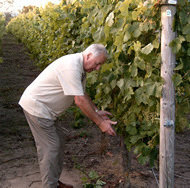 |
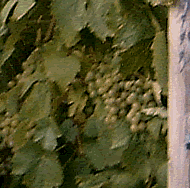 |
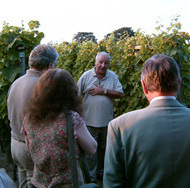 |
|
|
|
|
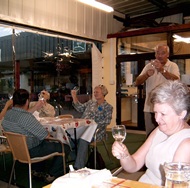 |
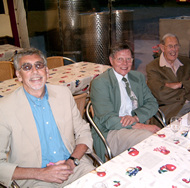 |
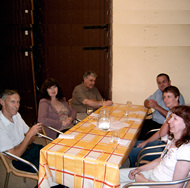 |
|
The Vineyard has won medals for its wines and the quality and consistency of taste etc. is maintained by the use of modern stainless steel juice separators and careful chemical analysis of the wine at the various stages of production. A brief description of faults in bottled wine was given such as precipitations of tannin and crystals of tartaric acid which are not harmful and can be separated without a problem. The serious problem of "corking" is usually caused by bacterial infection in the bottle due to inadequate hygiene. The name arises from infection thought to be due to a bad cork. The evening finished with an excellent buffet meal washed down with a choice of wine selected from those tasted. |